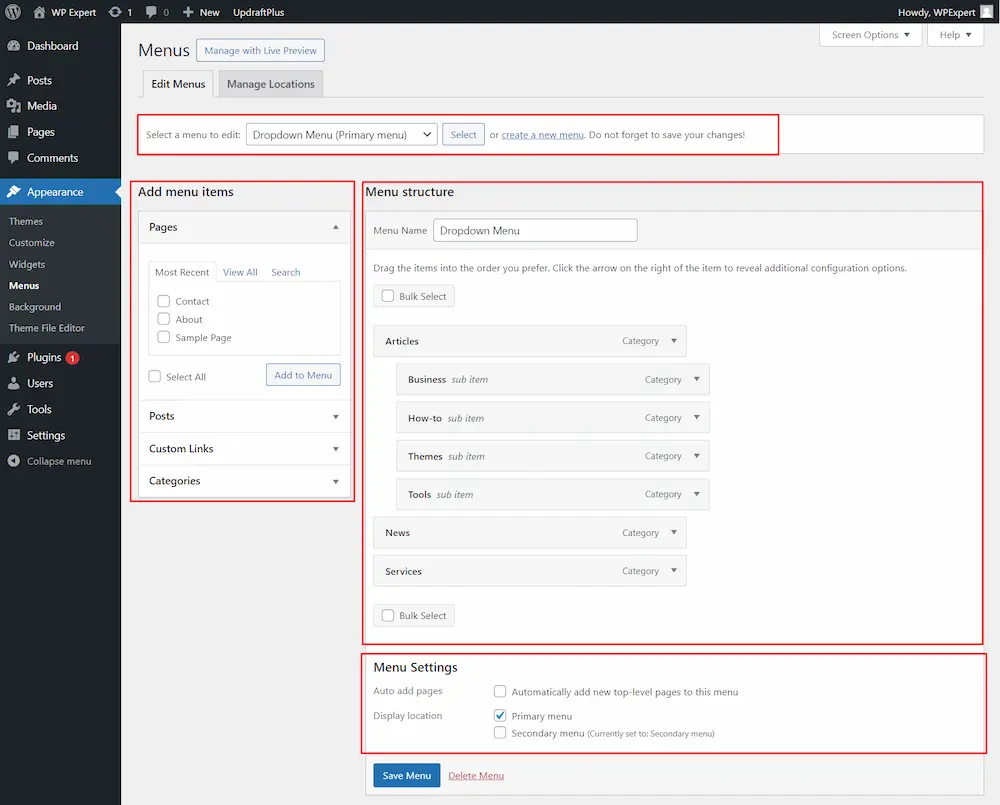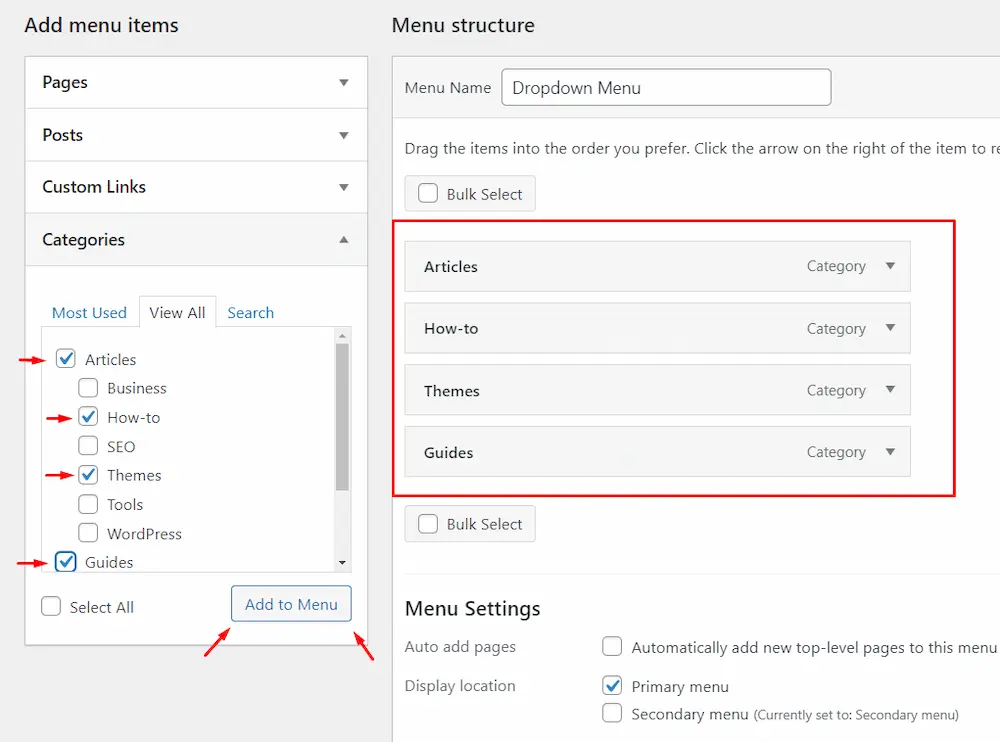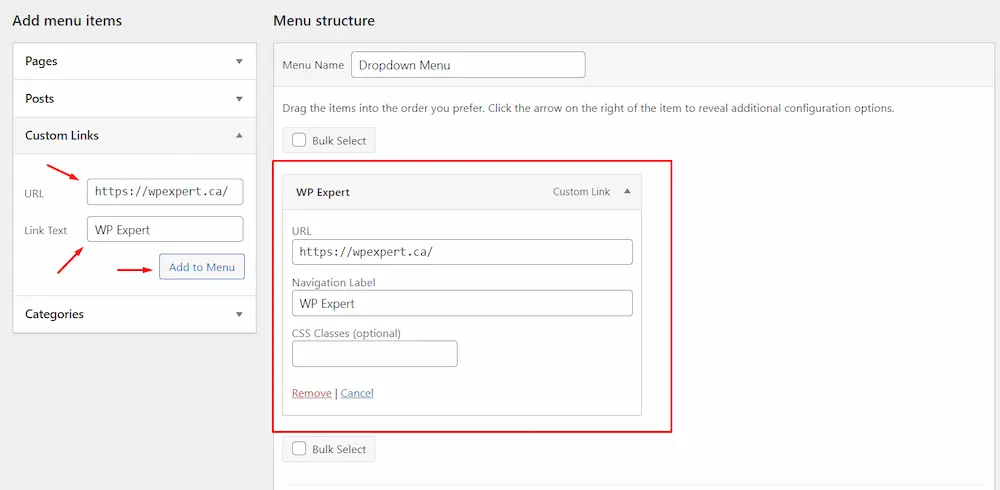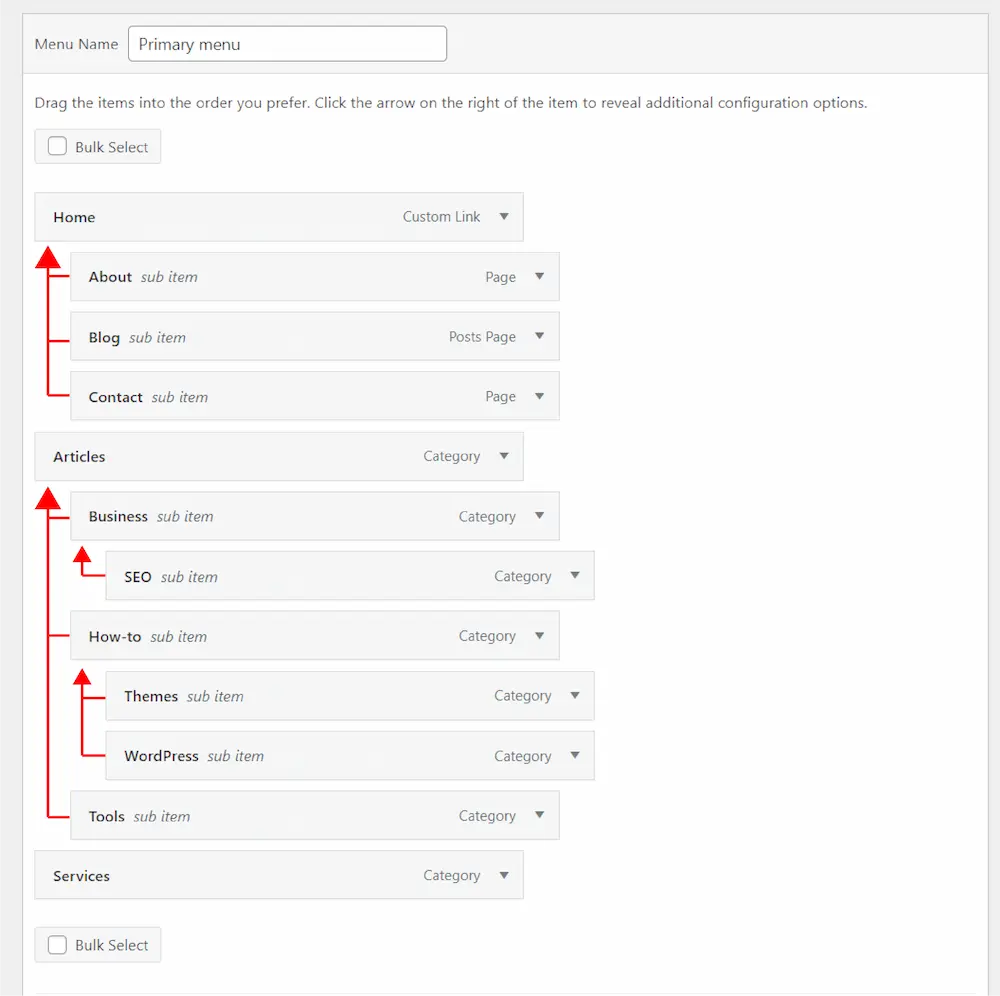A navigation menu is a crucial element of a website’s design, serving as the roadmap guiding users through the site’s content. It’s not just a list of links; a well-designed menu enhances user experience, improves site usability, and contributes to the site’s overall aesthetic. Navigation menus are particularly versatile, offering a range of customization options to suit different themes layouts and user needs.
This article delves into the specifics of creating and optimizing navigation menus in WordPress. Dropdown menus are an effective way to organize complex site structures in a user-friendly manner, making them a popular choice for WordPress site owners. The article covers everything from the basics of setting up a dropdown menu, to more advanced aspects like customization with CSS, ensuring your menus not only function well but also align with your site’s design. Whether you’re a beginner or looking to refine your existing site, these insights aim to equip you with the knowledge to enhance your site’s navigation effectively.
Accessing the WordPress Menu Editor for Site Navigation
Accessing the menu editor is a straightforward process, crucial for managing and customizing the navigation of your website. Here’s a step-by-step guide to help you navigate this essential feature.
Accessing the Menu Editor
- Log in to Your WordPress Dashboard: Start by logging into the administrative area of your site.
- Navigate to the Menu Editor:
- Go to the ‘Appearance’ section on the left-hand side of the Dashboard.
- Click on ‘Menus’ to open the menu editor interface.
Exploring the WordPress Menu Editor Interface
The menu editor is designed to be intuitive, even for those new to WordPress. Here’s a brief overview of what you’ll find:
- Menu Selection: At the top, you can select which menu you want to edit from a dropdown list or create a new menu.
- Menu Structure: The central area displays the structure of your selected menu. Here, you can drag and drop menu items to rearrange them.
- Add Menu Items: On the left side, you’ll find options to add pages, posts, custom links, or categories to your menu. Click ‘Add to Menu’ for each selection.
- Menu Settings: Below the menu structure, there are settings to assign your menu to different locations on your site, like the primary or footer menu.

In summary, the menu editor is a powerful tool, enabling you to build and customize your site’s navigation menus. It’s user-friendly, but for those requiring more sophisticated navigation structures or custom styles, professional assistance can be valuable. At WP Expert, we specialize in WordPress website design and development, helping you leverage the full potential of your navigation menus to enhance your site’s usability and aesthetic appeal. Check our Web Design Services.
Adding Items to Your WordPress Navigation Menu
After accessing the menu editor, the next crucial step is adding items to your menu. This section explains how to incorporate various types of content such as pages, posts, categories, and custom links into your navigation menu, and how to customize them for an organized and efficient navigation experience.
Incorporating Pages, Posts, and Categories into Your Menu
In WordPress, effectively building your menu involves adding various elements like pages, posts, and categories. This segment guides you through the simple process of incorporating these items into your menu, enhancing your site’s navigation and user experience.
- Locate the Add Menu Items Section: On the left side of the menu editor, you’ll find tabs for Pages, Posts, and Categories.
- Choose Items to Add:
- Pages: Select from a list of your existing pages or search for specific ones. Click the checkbox beside each page you want to add.
- Posts: Similar to pages, you can add individual posts to your menu. This is useful for highlighting specific content. Easy to add, just select and click ‘Add to Menu’.
- Categories: Adding categories creates a dropdown in the menu where visitors can select posts from specific categories.

For more insights on effectively using categories in WordPress, check out our detailed articles at WP Expert. They provide valuable tips and best practices to organize your content efficiently and enhance site navigation with Categories.
Enhancing Your WordPress Site with Custom Links in the Menu
In the menu editor, adding custom links offers the flexibility to connect your menu to any URL, be it an internal page or an external site. Here’s how you can easily add these custom links to your menu:
- Select the Custom Links Tab: This option allows you to add any URL to your menu.
- Enter URL and Link Text: Input the URL you want to link to and the text that will appear in the menu.

Creating a Custom Dropdown Menu in WordPress
Building a dropdown menu involves selecting main menu items and adding sub-items beneath them. Here’s a brief guide on how to effectively create and customize a dropdown menu:
- Select a Menu Item: Choose the item in the menu editor to serve as the main heading of your dropdown menu.
- Add Sub-Items: Place other items below your main item and indent them to create a dropdown structure. This is easy to add and allows for custom menu configurations.
- Customize Dropdown Settings: Adjust settings like appearance on hover or click to fine-tune the dropdown behavior. This might include setting up a header style or editing menu properties for better navigation experience.

Customizing WordPress Menu Items for Enhanced Site Navigation
Customizing the items in your menu involves editing labels, setting link behaviors, and optionally using CSS for advanced styling. Here’s how you can personalize each aspect to fit your site’s needs:
- Navigation Label: Each item added to your menu can have its Navigation Label edited. This label is what appears in your menu on the site. It’s simple to add a navigation label that resonates with your site’s theme.
- Opening Link in a New Tab: For external links, you might want the link to open in a new tab. This option can be selected in the menu item settings.
- CSS Classes (Optional): For more advanced customization, you can add CSS classes to individual menu items. This requires understanding of CSS and might be where professional assistance is needed.
Adding items to your navigation menu is a fundamental process in creating a navigable and user-friendly website. While this task is generally straightforward, achieving a more tailored or sophisticated menu structure may require additional expertise. Check our article about Website Maintenance Cost.
FAQ Section
What is a Navigation Menu and Why is it Important?
A navigation menu is a key feature on a website that guides users through the site’s content. It’s crucial because it enhances the user experience, improves site usability, and contributes to the site’s overall design. A well-structured menu makes it easier for visitors to find what they’re looking for, increasing the likelihood of them staying on your site longer.
How Do I Access the WordPress Menu Editor?
To access the menu editor in WordPress, log into your WordPress Dashboard, go to ‘Appearance’, and then click on ‘Menus’. This area lets you create and modify menus, add items, and assign menus to various locations on your site.
How Can I Add Items to My WordPress Menu?
You can add items to your WordPress menu by going to the ‘Menus’ section in your Dashboard. Here, you can add pages, posts, categories, or custom links by selecting them and clicking on ‘Add to Menu’. You can then drag and drop these items to arrange them in your menu.
What are the Steps to Create a Dropdown Menu in WordPress?
To create a dropdown menu, select a main menu item in the menu editor, then drag other items below it and indent them slightly. This creates a submenu or dropdown effect under the main item. You can further customize the dropdown settings as needed.
How Do I Customize Menu Items in WordPress?
Customizing menu items involves editing the Navigation Label for each item, which is the text displayed in your menu. You can also choose to open links in a new tab, especially for external links. For advanced customization, like changing the style or appearance, you can add CSS classes to the menu items.
Are There Any Tips for Creating Effective Dropdown Menus?
Yes, effective dropdown menus should be easy to navigate and visually appealing. Keep the menu structure simple, use clear labels, ensure it’s mobile-friendly, and consider adding visual cues like arrows for dropdowns. For more complex styles, you might need CSS knowledge or professional help.
Concluding Insights on Improving Your Site’s Navigation with Effective Menus
As we wrap up this exploration into WordPress site navigation, it’s evident that mastering the menu editor and effectively incorporating various content types like pages, posts, and custom links significantly elevates the user experience. Through this guide, we’ve seen how the thoughtful organization and customization of menu items can transform a website’s usability and aesthetic appeal.
Navigating through the menu editor and understanding how to tailor dropdown menus and other navigation elements are integral skills for any website owner or developer. These menus not only guide visitors through your site’s content but also reflect the professionalism and attention to detail in your site’s design.
The steps and strategies discussed in this article provide a roadmap for creating a cohesive and intuitive navigation structure. By applying these principles, you can ensure that your website not only functions efficiently but also resonates with your audience, offering a seamless browsing experience.
